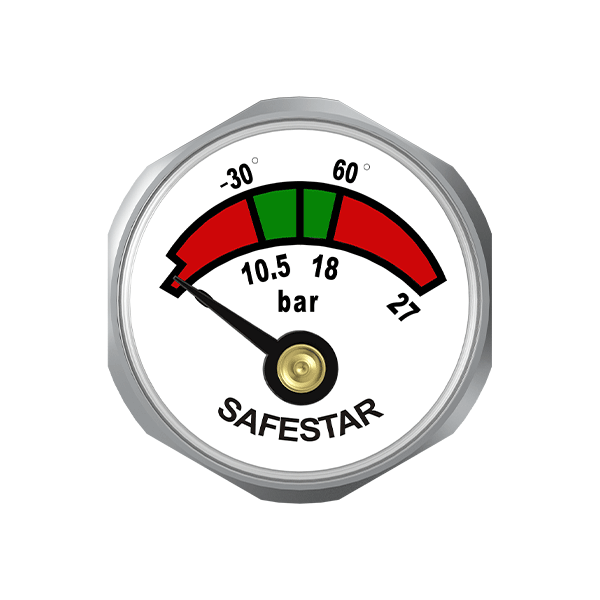Fire is one of the most dangerous and destructive elements that can cause significant damage to property and even loss of life. It is essential to have the right tools and equipment to combat fire in case of an emergency. One of the most common and effective tools for fighting fire is a fire extinguisher. Fire extinguishers come in different types, and each type is designed to put out a specific type of fire. One of the most versatile types of fire extinguishers is the dry powder fire extinguisher. In this blog post, Safestar will explore how the dry powder fire extinguisher pressure gauge works.
What is a dry powder fire extinguisher?
A dry powder fire extinguisher is a type of fire extinguisher that uses a dry chemical powder to put out fires. The powder is usually made of sodium bicarbonate or potassium bicarbonate, which is a non-conductive and non-corrosive substance. Dry powder fire extinguishers are effective in putting out fires caused by flammable liquids, gases, and electrical equipment.
How does a dry powder fire extinguisher work?
Dry powder fire extinguishers work by smothering the fire and cutting off the oxygen supply. The powder forms a barrier between the fuel and the oxygen, preventing the fire from spreading. The powder also absorbs the heat, which helps to cool down the fire and prevent it from reigniting.
The dry powder fire extinguisher is designed to be easy to use. It has a nozzle that directs the powder towards the fire. To use the extinguisher, you need to pull the safety pin, aim the nozzle at the base of the fire, and squeeze the handle. The powder will come out of the nozzle and cover the fire, putting it out.

Working principle of dry powder fire extinguisher pressure gauge provide
The pressure gauge on a dry powder fire extinguisher is an essential component that helps to ensure that the extinguisher is ready to use in case of an emergency. The pressure gauge measures the pressure inside the extinguisher, which indicates the amount of powder that is available to put out a fire.
The pressure gauge on a dry powder fire extinguisher works by using a spring-loaded mechanism. The mechanism is connected to a diaphragm that is inside the extinguisher. When the pressure inside the extinguisher increases, the diaphragm moves, which compresses the spring. The movement of the diaphragm is transmitted to the gauge through a linkage.
The pressure gauge has a needle that moves along a scale. The scale is marked with different pressure levels that indicate the amount of powder that is available. When the pressure inside the extinguisher is at the correct level, the needle will be in the green zone. If the pressure is too low, the needle will be in the red zone, indicating that the extinguisher needs to be recharged.
Maintaining the Pressure Gauge
To ensure that the pressure gauge on your dry powder fire extinguisher is working correctly, it is essential to perform regular maintenance. The pressure gauge should be checked at least once a month to ensure that the needle is in the green zone. If the needle is in the red zone, the extinguisher should be recharged immediately.
It is also essential to have your dry powder fire extinguisher inspected and serviced by a qualified technician at least once a year. During the inspection, the technician will check the pressure gauge, the nozzle, and the overall condition of the extinguisher. If any issues are found, the technician will make the necessary repairs or recommend that the extinguisher be replaced.
Conclusion
A dry powder fire extinguisher is an essential tool for fighting fires. The pressure gauge on the extinguisher is an essential component that helps to ensure that the extinguisher is ready to use in case of an emergency. The pressure gauge works by measuring the pressure inside the extinguisher, which indicates the amount of powder that is available to put out a fire. Regular maintenance and inspections are essential to ensure that the pressure gauge is working correctly and that the extinguisher is ready to use when needed.
Safestar
export@safestar.com.cn